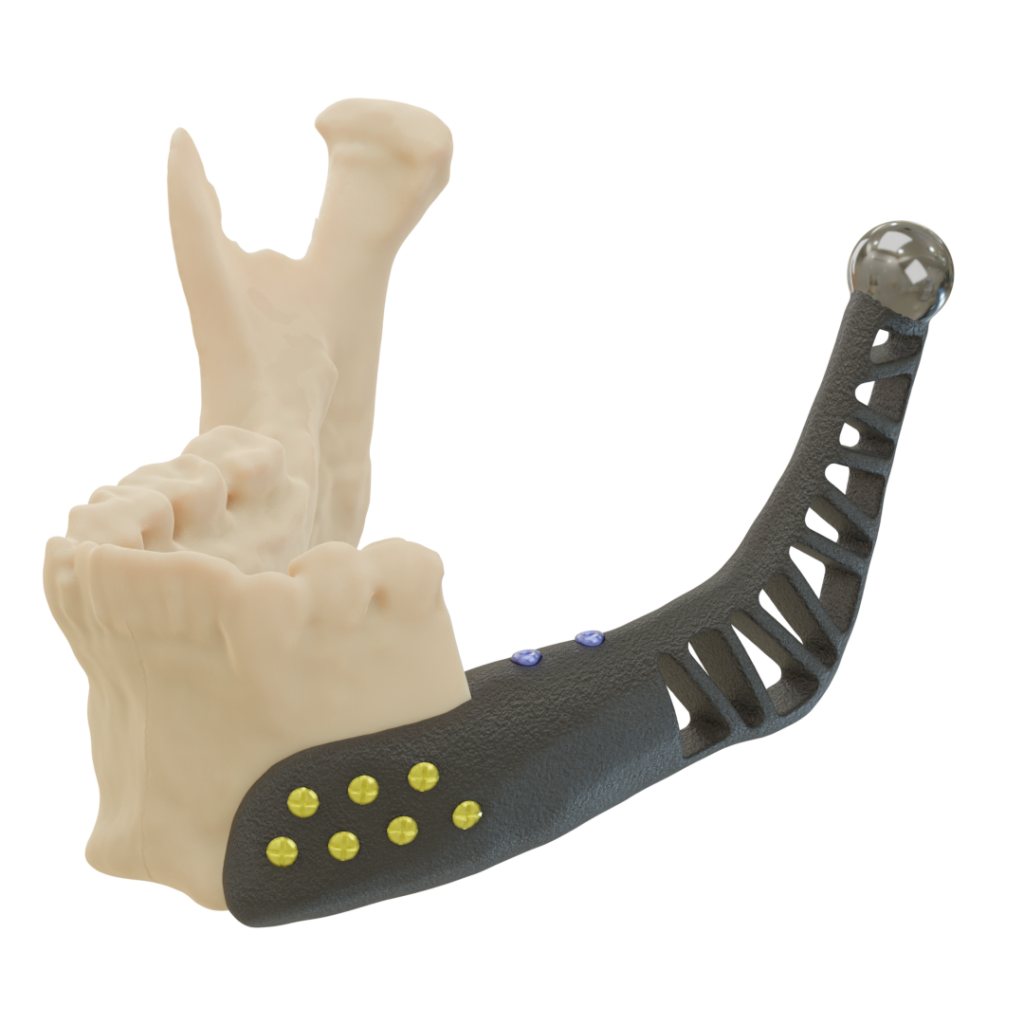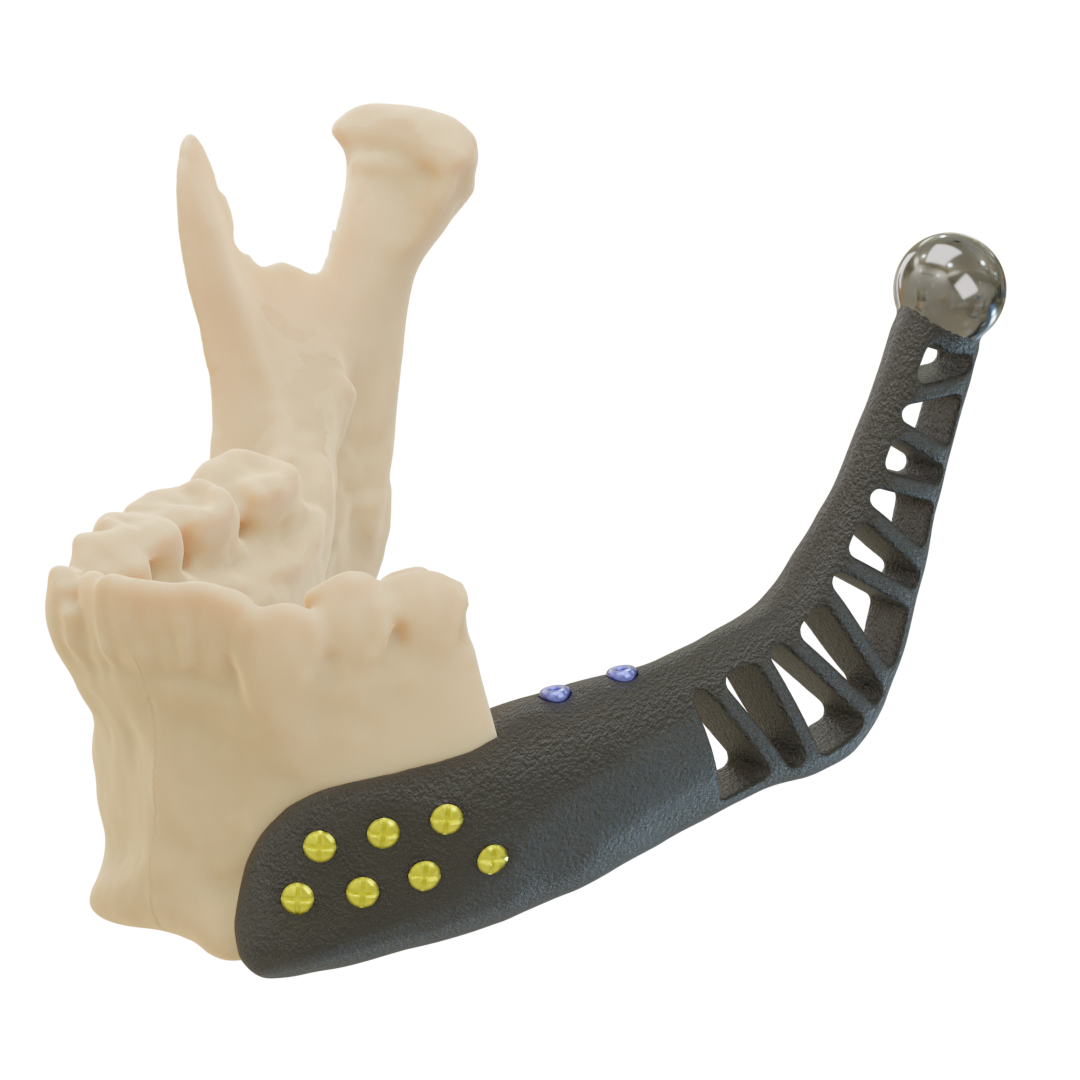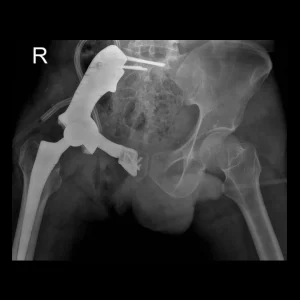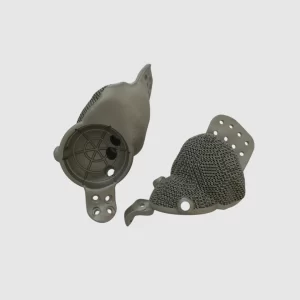Partial Mandibular Implant
An alternative to reconstruction plates in patients suffering mandibular tumors, these implants preserve facial contours and can include dental implants for future rehabilitation.

Product Overview


Product Overview
Custom-made partial mandibular implants are an excellent treatment option for patients suffering from various mandibular tumors or those who have had catastrophic trauma to the region resulting in significant bone loss.
Unlike OTS alternatives such as reconstruction plates, 3D-printed customized implants ensure facial symmetry after the surgery. Furthermore, when combined with patient-specific resection guides, surgical time is significantly reduced, decreasing the risk of infection and other surgical complications.
Workflow
Medical Imaging
CT-Scan and Oral Scan will be used to reconstruct an accurate 3D model of the patient.
Prosthesis Design
Our team of clinical engineers will design the prosthesis based on the patient's anatomy
Manufacturing
After receiving surgeon's approval, prosthesis will be 3D printed out of titanium
Surgery
Sterilized prosthesis accompanied by a 3D printed model will be delivered to the surgeon and a representative will be present in the OR upon request
Specifications
The surgeon may choose from the available list of features depending on their treatment plan and clinical patient assessment.
As these prostheses are intended to be used in hemi-arthroplasties of the TMJ, the condylar surface is polished to a mirror finish in order to minimize abrasion and friction between the prosthesis and the condylar fossa.
At the interface between the bone and the prosthesis, it is possible to have a TPMS lattice structure such as gyroid, in order to promote bone ingrowth as a secondary mechanism of fixation in addition to the screws.
As the prosthesis is designed based on the patient’s unique anatomy, facial symmetry restoration is an inherent feature of these prostheses.
Each prosthesis can include the necessary number of abutment installation sites for future dental rehabilitation. These are positioned based on the patient’s oral scan and will be covered with a cover screw or a healing abutment, depending on the surgeon’s preference.
Specifications
The surgeon may choose from the available list of features depending on their treatment plan and clinical patient assessment.
Patient-Specific Resection Guide
Using patient-specific resection guides will ensure that the mandible will be cut precisely according to the preoperative planning and with the desirable safety margin from the tumor.
The surgical guide will be designed based on the patient’s mandibular anatomy and oral scan. The use of the surgical guide comprises the following steps:
- Intraoral incision is made, and bone is exposed for registration of the guide
- Surgical guide is inserted, registered in place, and fixed in place using a screw (if necessary)
- Tumor resection is carried out using the slot designed in the guide
- Surgical guide is removed, and the remaining bone is ready for implantation of the prosthesis

Cases report
The patient is a 31-year-old man diagnosed with pelvic osteosarcoma, who presented with...Read More
The patient is a 36-year-old man who has been diagnosed with pelvic sarcoma...Read More
The patient is a 22-year-old woman who has been affected by a Giant...Read More
The patient is a 49-year-old man who had previously undergone surgery and subsequently...Read More
Cases reports
Our case reports highlight successful outcomes achieved through our custom-made implants. They showcase the effectiveness of our treatment plans and the expertise of our team in creating tailored solutions for each patient.
By reviewing these reports, you can gain a better understanding of the level of care and precision that we bring to every aspect of our work with patient specific implants.




